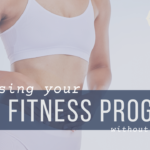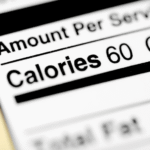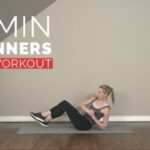Starting a fitness journey can feel overwhelming and intimidating. Many beginners make the same mistakes that could have been avoided with the right knowledge. This guide covers the essential things every fitness newcomer should know before taking their first steps into the gym or home workout routine.
Setting Realistic Goals and Expectations

Understanding SMART Goal Setting
One of the biggest mistakes beginners make is setting vague or unrealistic goals. Instead of saying “I want to get fit,” successful fitness journeys start with SMART goals – Specific, Measurable, Attainable, Relevant, and Time-bound.
For example, rather than “lose weight,” a SMART goal would be “lose 10 pounds in 12 weeks by exercising four times per week and eating in a calorie deficit”. This approach gives you a clear roadmap and makes it easier to track progress.
Managing Your Expectations
Fitness progress takes time, and results don’t happen overnight. Most beginners expect dramatic changes within the first few weeks, leading to disappointment and giving up.Understanding that meaningful changes typically take 8-12 weeks helps set realistic expectations and prevents early discouragement.
Also Read How to Start Working Out When You’re Out of Shape
The Foundation: Proper Form and Safety
Why Form Matters More Than Weight
One of the most common beginner mistakes is lifting too heavy too soon while ignoring proper form. Poor form can lead to injuries, muscle imbalances, and actually slow down your progress. Start with lighter weights that allow you to complete movements with perfect technique.
The Importance of Warm-ups and Cool-downs
Many beginners skip warm-ups to save time, but this is a recipe for injury. A proper 5-10 minute warm-up increases blood flow to muscles, improves flexibility, and reduces injury risk.Similarly, cooling down with static stretches helps prevent soreness and aids recovery.
Creating a Balanced Workout Routine

Starting with the Basics
As a beginner, focus on full-body workouts 3-4 times per week rather than complex split routines. This allows your body to adapt gradually while ensuring all major muscle groups are trained. A typical beginner routine should include:
- Strength training: 2-3 sessions per week focusing on compound movements
- Cardiovascular exercise: 150 minutes of moderate-intensity activity per week
- Flexibility work: Daily stretching or yoga sessions
Progressive Overload Principle
Your body adapts quickly to exercise, so you need to gradually increase the challenge. This means slowly adding more weight, reps, or sets over time. Without progressive overload, you’ll hit a plateau where progress stops.
Nutrition: Fueling Your Fitness Journey
The Role of Proper Nutrition
Exercise alone isn’t enough – nutrition plays a crucial role in achieving fitness goals. Your body needs the right fuel to perform workouts and recover properly. Focus on whole, nutrient-dense foods including lean proteins, complex carbohydrates, healthy fats, fruits, and vegetables.
Pre and Post-Workout Nutrition
What you eat before and after workouts matters. Pre-workout meals should include easily digestible carbohydrates for energy, consumed 1-2 hours before exercise. Post-workout nutrition should focus on protein for muscle repair and carbohydrates to replenish energy stores.
The Critical Role of Recovery and Sleep
Sleep: Your Secret Weapon
Sleep is when your body actually repairs and builds muscle. During deep sleep, your body releases growth hormone, which is essential for muscle recovery and growth. Adults need 7-9 hours of quality sleep per night for optimal recovery.
Rest Days Are Not Optional
Many beginners think more is always better, but overtraining can actually hurt your progress.Your muscles grow during rest periods, not during workouts. Schedule at least one full rest day per week, and consider active recovery activities like light walking or yoga.
Building Mental Resilience and Motivation
Developing the Right Mindset
Fitness is as much mental as it is physical. Instead of viewing exercise as punishment, reframe it as self-care and an investment in your health. Focus on how exercise makes you feel rather than just physical changes.
Overcoming Mental Barriers
Common mental obstacles include lack of motivation, comparing yourself to others, and fear of judgment. Remember that everyone starts somewhere, and the only person you should compare yourself to is who you were yesterday.
The Power of Social Support and Accountability
Finding Your Fitness Community
Having social support significantly increases your chances of success. Whether it’s a workout buddy, online community, or personal trainer, accountability partners help you stay consistent when motivation wanes.
How to Choose an Accountability Partner
Look for someone who shares similar goals and commitment levels. Your accountability partner should be supportive, reliable, and willing to check in regularly. This person doesn’t need to be at the same fitness level but should be genuinely invested in helping you succeed.
Tracking Progress and Breaking Through Plateaus
Monitoring Your Journey
Keep track of your workouts, measurements, and how you feel. Use fitness apps like Strong, Hevy, or JEFIT to log exercises and track progression. Progress photos and body measurements often show changes that the scale doesn’t reflect.
Overcoming Plateaus
Plateaus are normal but frustrating parts of the fitness journey. When progress stalls, try changing your routine, increasing intensity, or adjusting your nutrition. Sometimes plateaus indicate you need more recovery time rather than harder workouts.
Equipment and Where to Start
Home vs. Gym: Making the Choice
You don’t need expensive equipment to start your fitness journey. Basic home equipment like adjustable dumbbells, resistance bands, and a yoga mat can provide an excellent workout.However, gyms offer more variety and professional guidance for beginners.
Essential Equipment for Beginners
If working out at home, start with:
- Adjustable dumbbells or resistance bands
- A sturdy exercise mat
- Proper athletic shoes for your chosen activities
- Optional: pull-up bar or suspension trainer
Common Mistakes to Avoid
The “All or Nothing” Mentality
Many beginners go from sedentary to exercising daily, leading to burnout or injury. Start with 3-4 workouts per week and gradually increase frequency as your body adapts.
Neglecting Proper Planning
Walking into the gym without a plan often leads to ineffective workouts. Having a structured routine helps you target all muscle groups and track progress effectively.
Comparing Yourself to Others
Social media creates unrealistic expectations about fitness progress. Remember that transformation photos often show months or years of work, not weeks.
Frequently Asked Questions
Q: How long before I see results from exercise?
Q: Should I do cardio or strength training first?
Q: How often should I work out as a beginner?
Q: What if I’m too sore to work out?
Q: Do I need supplements as a beginner?
Q: How do I know if I’m lifting the right weight?
Q: Is it normal to feel intimidated at the gym?
Q: How important is nutrition compared to exercise?
Q: Should I work out when I’m sick?
Starting a fitness journey doesn’t have to be overwhelming. By understanding these fundamental principles, setting realistic goals, and being patient with the process, you’ll be well-equipped to build lasting healthy habits. Remember, the best workout is the one you’ll consistently do, and every expert was once a beginner. Your future self will thank you for starting today.
Author- Ayush










